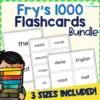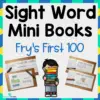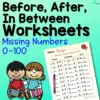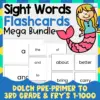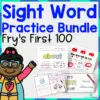Rainforests are natural habitats for a lot of unique animals and plants. These areas are filled with gigantic trees and get a lot of rainfall yearly.
Let children explore the rainforests’ diverse flora and fauna with these fantastic activities that will surely pique their interests as they learn about the importance of these protected areas.
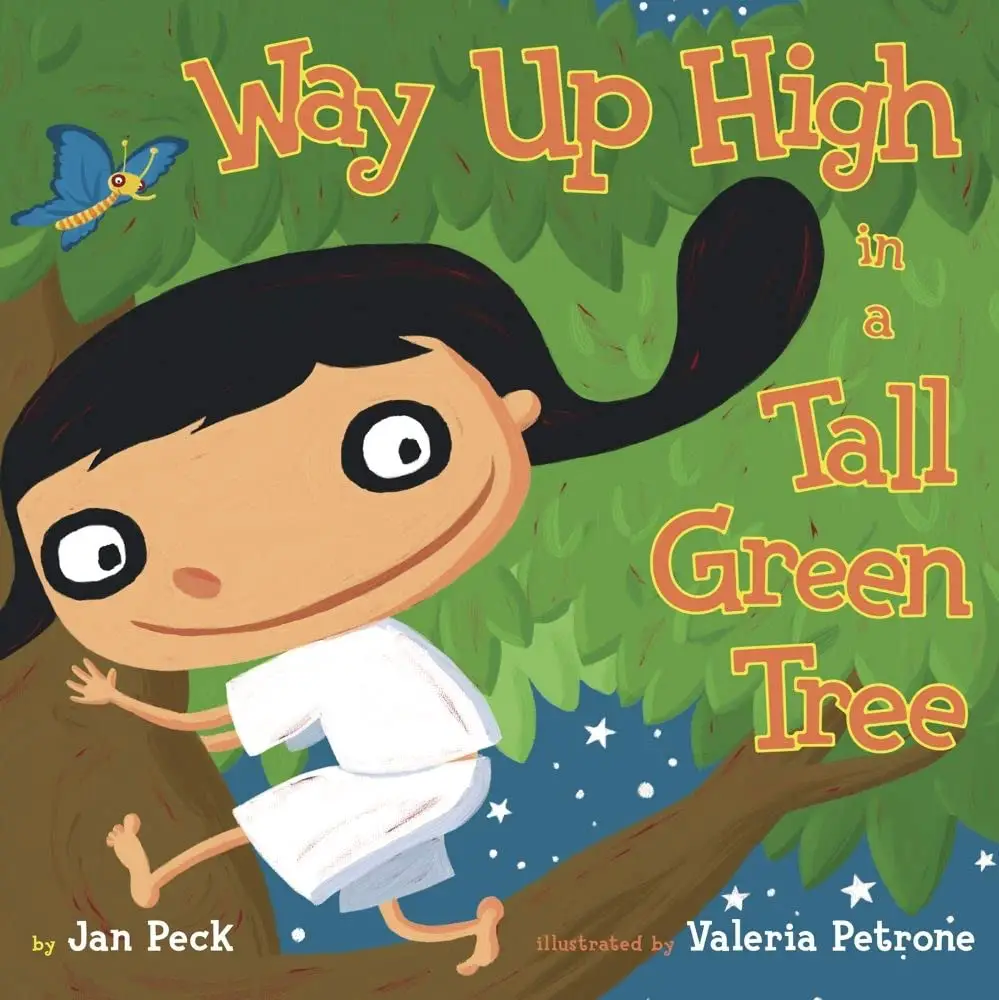
Picture books are highly valued because they enable educators to explain new and complex concepts to children in a fun and engaging manner. The site lists forty-eight books about the rainforest to choose from.
One of these books is “Way Up High in a Tall Green Tree” by Jan Peck. It is a bedtime book about a girl climbing a tall tree and meeting different rainforest animals.
The story is narrated using repetitive text. This writing style provides opportunities for children to remember the lines and engage in reading.
Reading this book will help children improve their comprehension and will help them learn the sequence of events.
It will also help increase their vocabulary as they learn the names of animals.
Play an I Spy game to learn about the different rainforest animals. Place pictures around the room and say the line, “Way up high in a tall green tree, I spy a…”
For this activity, you will need:
- Books about rainforests like Way Up High in a Tall Green Tree
For more information on this activity, go to TeachingExpertise.com.
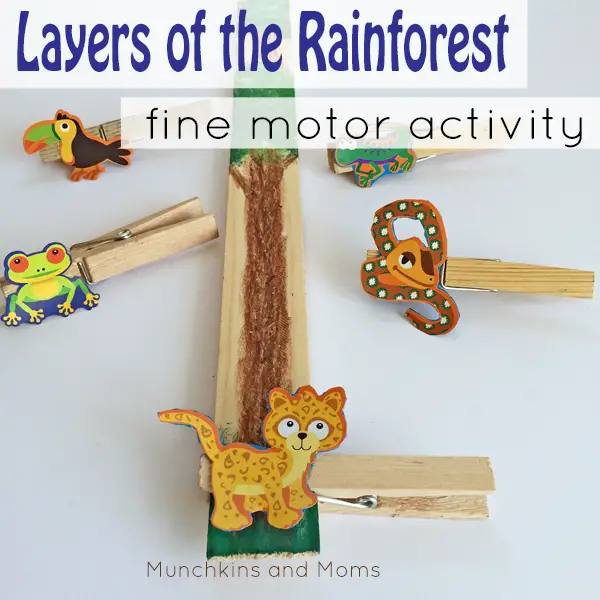
This activity allows children to learn about the layers of the rainforests (emergent, forest floor, understory, and canopy) while improving their fine motor skills. Children are to determine which layer the adorable animals live in in the rainforest by clipping them on the tree.
Using clothespins will allow children to strengthen their finger muscles and improve their tripod grasp, which is essential for future writing tasks.
It will also help improve their hand-eye coordination skill and control when they attempt to clip in the right place.
Use the crayon to make a three-layer rainforest tree. This should include the forest floor, canopy, and emergent layer. Next, stick the animal stickers on paper and cut them out. Use glue to adhere to the clothespins.
Explain the layers of the rainforest and ask the children to find out which layer the animals live in. Let them clip the animal clothespin on the correct layer. Use pictures and videos to help them figure out the right answer.
For this activity, you will need:
- Paint sticks
- Paint
- Paper
- Scissors
- Crayons
- Wooden clothespins
- Glue
- Rainforest animal stickers
For more information on this activity, go to PlayTeachRepeat.com.
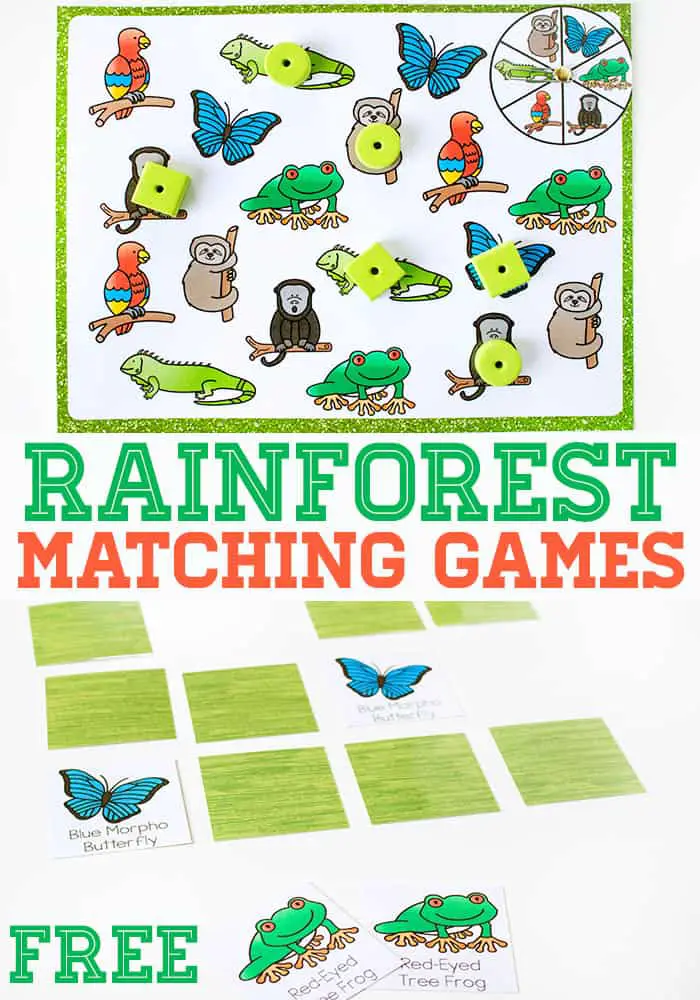
Matching games help improve memory and concentration and increase vocabulary. This game is helpful for children when learning new words. It also helps them to pay attention to detail and improve their scanning ability.
Get this free printable from the site. Print the game pieces on white cardstock. The site recommends laminating these for durability. The game can be played in three ways, and it can be a single or multi-player.
Insert a paper fastener on the spinner for the Spin and Cover game sheet. Have the children spin and find the animals to where the spinner lands. They are to use the counters to cover the animals.
Another option is to lay the picture cards face-side up and let the children match the identical pictures.
It can be played like a memory game for older children who might want it more challenging. Flip the cards, face side down, and find the matching pair.
For this activity, you will need:
- Printed game cards
- Paper fastener
- Counters
For more information on this activity, go to LifeOverCs.com.

Based on the book “The Great Kapok Tree” by Lynne Cherry,, this STEAM activity will challenge children to build the tallest tree using the given materials.
With the Kapok tree identified as one of the tallest trees in the rainforest, children will learn to think critically and solve problems in various ways. This activity will also help with fine motor skills and control.
While reading the book, point out details such as the massive tree trunk stretching out to the canopy layer of the rainforest. Emphasize its size and height compared to the illustration of the man.
Next, provide the materials and explain the challenge. Let the children work on the problem by trial and error. They can use toilet paper rolls and wooden blocks as the trunk and green craft sticks for the leaves of the Kapok tree.
Older children may use the tape measure to find the length of their trees.
For this activity, you will need:
- The Great Kapok Tree Book
- Craft sticks
- Toilet paper rolls
- Wooden blocks
- Tape measure
For more information on this activity, go to PreschoolSTEAM.com.
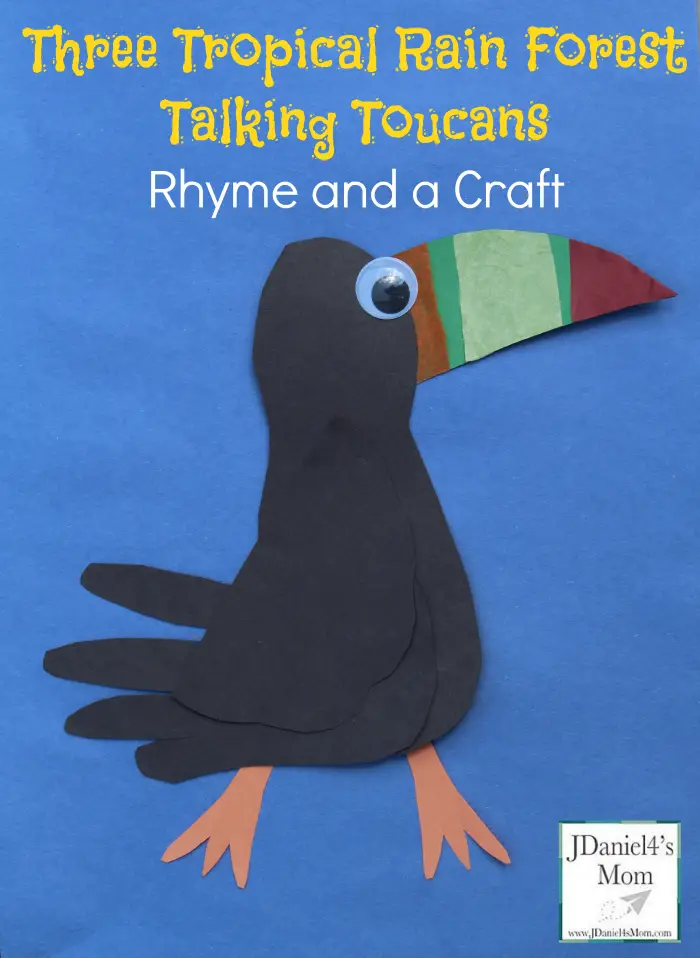
This adorable bird craft is made from footprint and handprint cutouts. This craft will provide a wonderful sensory experience for children. Discuss the animal’s unique features through a lesson in Science.
Point out the colors of the toucan to help children with color recognition skills. Have the children compare the toucan with different birds they are familiar with to help with critical thinking skills and attention to detail.
Have the children trace their handprints and footprints on black cardstock and cut these out. Assist children if necessary. Let them cut out a black wing, two orange legs, and a green bill from colored cardstock.
Let them assemble the bird by placing the handprint over the footprint. The fingers will be the bird’s tail, and the heel will be the head. Attach the wings, feet, and bill.
Glue colored tissue paper on the beak to create colorful stripes. Finally, add the googly eye.
For this activity, you will need:
- Cardstock
- Tissue paper
- Scissors
- Googly eye
- Glue
- Marker or pencil
For more information on this activity, go to JDaniel4SMom.com.
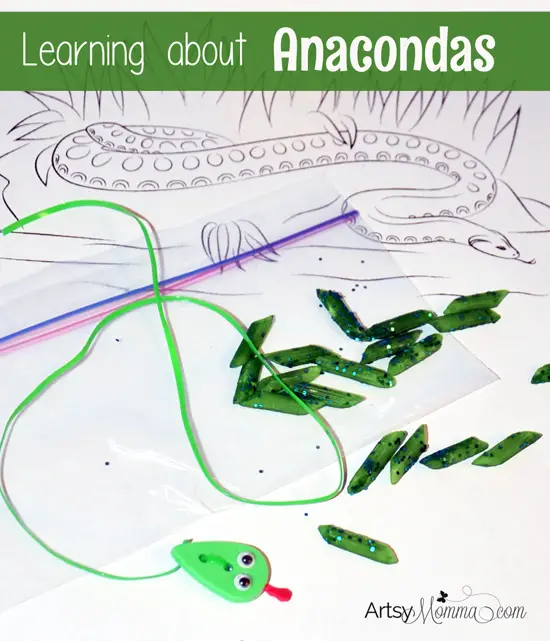
Anacondas are the biggest and heaviest snakes in the world. Explore this amazing animal with this threading activity that will help strengthen children’s fine motor skills and improve their eye-hand coordination skills.
Place a small amount of water and a few drops of food coloring inside a Ziploc bag to color the pasta green. Mix well and add the pasta. Shake the pasta in the bag, ensuring each one is fully covered with green.
The site suggests adding black glitter for the anaconda’s spots at this stage. Next, take the pasta out and let these dry.
Next, attach the small googly eyes on a green tear-shaped button. Cut a long piece of lacing cord and attach it to the button. Add a red ribbon for the snake’s tongue.
Have the children thread the pasta to make the anaconda. Let them count the pasta as they are threaded. Make several of these with different lengths for children to compare.
For this activity, you will need:
- Tube-shaped pasta
- Green button
- Food coloring
- Ziploc bags
- Plastic lacing cord
- Googly eyes
- Red ribbon
- Glitter
- Glue
For more information on this activity, go to ArtsyMomma.com.
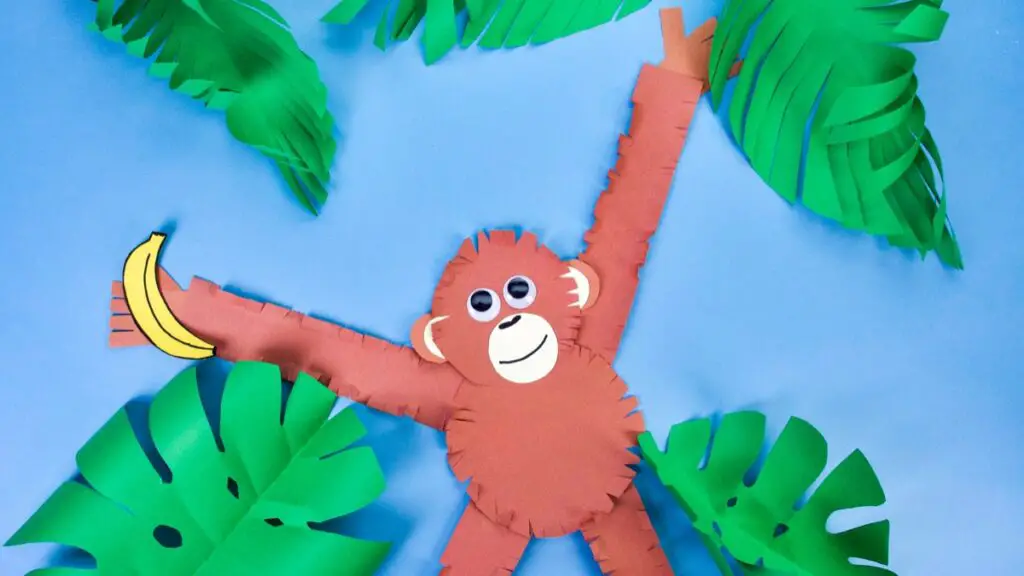
This cute monkey craft can be used for the nursery rhyme “Five Little Monkeys,” which will teach children to count backward.
Also, expose children to different movements inspired by monkeys. For example, the yoga monkey pose will help strengthen the leg and arm muscles. It will also improve children’s gross motor skills and coordination.
Have the children cut four strips of brown construction paper for the arms and legs. Let them snip the edges on both sides to create a fuzzy texture that resembles the monkey’s fur.
Next, let them trace two different sizes of round objects to make the head and body. Have them snip the edges of these circles and glue them together.
Have the children cut out brown hands and feet and brown and white circles for the ears and mouth. Let them glue these parts on the monkey and add details with a marker. Lastly, add the googly eyes.
For this activity, you will need:
- Construction paper
- Scissors
- Googly eyes
- Glue
- Marker
- Round objects for tracing
For more information on this activity, go to SuperSimple.com.
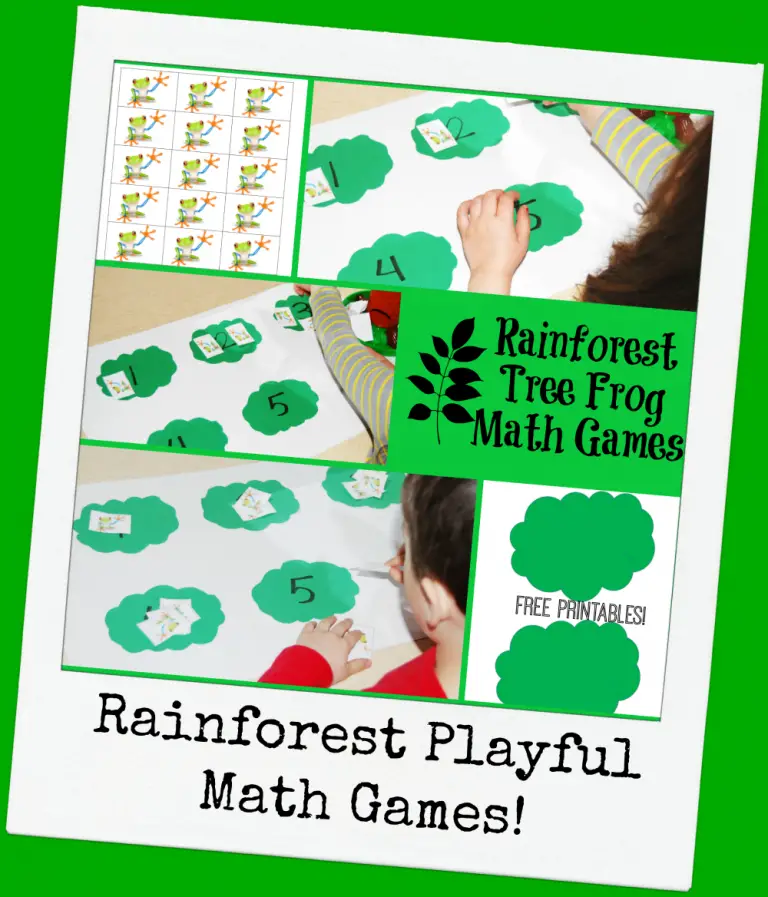
The red-eyed tree frog is this versatile math game’s focus, which can be played in several ways. Some math concepts for children that can be learned are counting, one-to-one correspondence, number recognition, addition, and subtraction.
This game will help improve children’s concentration while paying attention to details. The frog cards are the counters in this game.
Download and print this free game from the site. Cut out and laminate for durability.
To teach one-to-one correspondence, write a number on the lily pad. Ask the child to say the written number. Next, let him place the same number of cards on the lily pad. Children can count out loud during this part.
This activity can also be played using a die. Have the children roll a die, say the number, and give the exact number of cards.
Several children can play this game. Learning to wait for their turn will help lengthen their patience and improve their attention.
For this activity, you will need:
- Printed tree frog cards and lily pads
- Dry erase marker
- Container for the frogs
- A die
For more information on this activity, go to ThePreschoolToolBoxBlog.com.
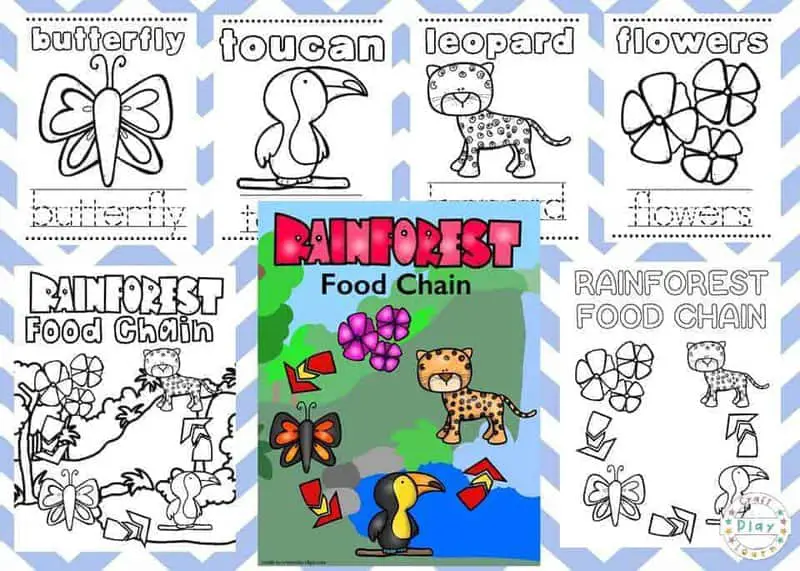
Bring out those special crayons and markers because children will have a great time with this set of coloring pages. Children will learn about one example of a food chain that takes place in the rainforest.
This activity will help improve children’s coloring and tracing skills. It will also increase their vocabulary and learn the food chain concept.
This set of free printables can be downloaded from the site. Print these out and have children color the pages with animals.
If possible, refer to pictures and videos to show children what these animals look like in real life. This can be a basis for them when choosing colors. Let them trace the words on the line.
Next, explain the food chain. Use the song “Slippery Fish” as a reference for this idea. Explain how a small animal gets eaten by a bigger animal. This system is essential in keeping the balance in the ecosystem.
For this activity, you will need:
- Printed coloring pages
- Crayons or markers
For more information on this activity, go to CraftPlayLearn.com.
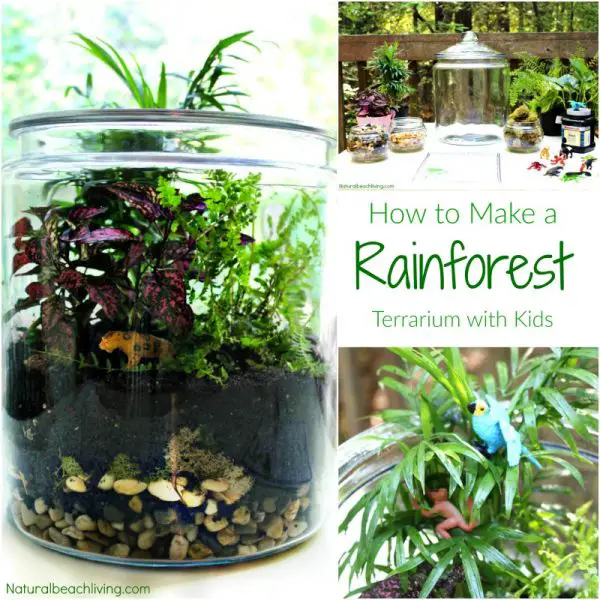
Recreate the rainforest environment with this astonishing project that will help children understand the importance of these valuable ecosystems. A lesson in science will help explain the uniqueness of the rainforests and the concept of terrariums.
Terrarium making will provide a great sensory experience and can be a long-term activity as children keep up with its maintenance. The use of toy animals will help improve children’s vocabulary.
Ensure that the jar and other materials are clean and dry before starting. Next, have the children fill the jar with pebbles about an inch from the bottom. Let them add activated charcoal to help keep the terrarium clean by acting as a filter.
Allow them to top this with moss, then potting soil. Have them use the spray bottle filled with water to moisten the plants. Let them plant the tropical plants inside the jar and top these with moss. Place the animals in the terrarium.
For this activity, you will need:
- A large jar with lid
- Pebbles
- Activated carbon or charcoal
- Moss or pistachio shell
- Organic potting soil
- Tropical plants
- Toy rainforest animals
- Spray bottle with water
For more information on this activity, go to NaturalBeachLiving.com.
Conclusion
The rainforest is a complex ecosystem that provides amazing habitats for a lot of animals and plants to thrive. Consider these activities to help children gain awareness of the value and the need to protect these resources.
Thank you for reading. Come back and check out our other activity articles soon.
Related activities and resources:


